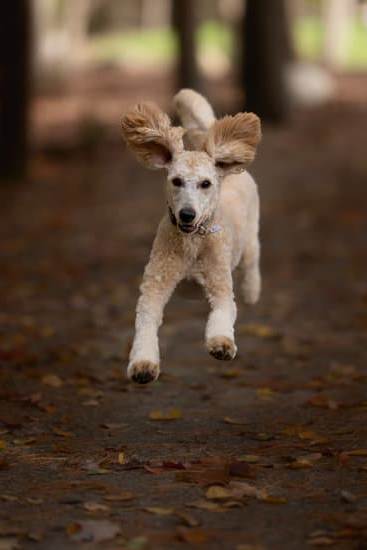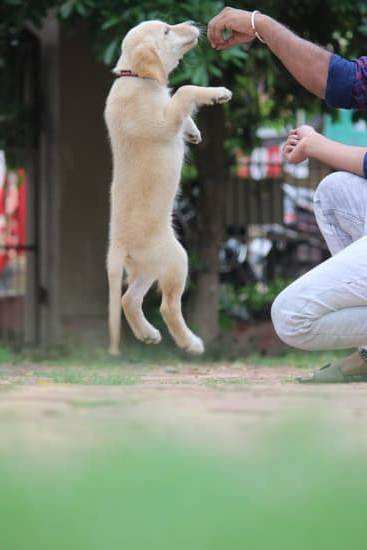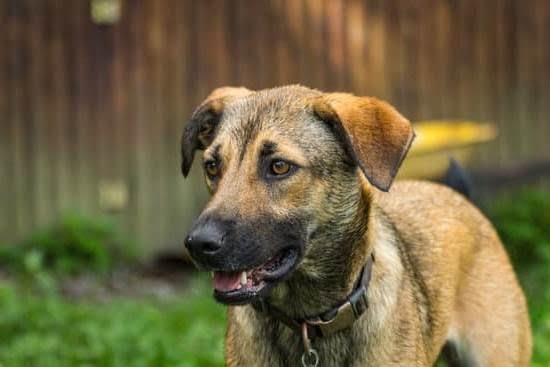House training a dog can be a challenging task, especially when dealing with an older dog. Older dogs may already have established habits and behaviors that can make the house training process more difficult.
However, with patience, consistency, and the right approach, it is possible to successfully house train an older dog. This article will provide a comprehensive guide on how to house train an older dog, covering everything from assessing the dog’s previous training and habits to establishing a routine and utilizing positive reinforcement techniques.
When house training an older dog, it is important to take into consideration any previous training or habits they may have developed. Understanding their current state will help determine which areas of the house training process may need extra attention. Additionally, creating a structured routine for feeding, exercise, and bathroom breaks will help establish consistent patterns that the dog can rely on.
One crucial aspect of house training an older dog is setting up a designated bathroom area. Choosing a specific spot for the dog to eliminate in will help them develop good habits and avoid accidents inside the house. Crate training can also be beneficial in the house training process as it provides the dog with a safe and comfortable space when unsupervised.
Consistent positive reinforcement is key when teaching an older dog proper bathroom behavior. Rewards, praise, and treats should be used to encourage desired actions while accidents should be handled calmly without discouraging the dog. Patience, persistence, and consistency are vital throughout this process.
If challenges persist or additional guidance is needed, it may be worth considering seeking professional help from trainers or behaviorists experienced in working with older dogs. Ultimately, with time, dedication, and love, any older dog can be successfully house trained. The following sections of this article will delve deeper into each step of this house training journey to ensure success for both you and your furry companion.
Assessing the dog’s previous training and habits
Assessing the dog’s previous training and habits is a crucial step in successfully house training an older dog. Understanding their current state and any previous training allows you to tailor your approach and address any specific challenges or issues that may arise.
One way to assess the dog’s previous training is by observing their behavior and habits. Take note of how they behave around the house, whether they have any signals or cues indicating their need to eliminate, and if they show any signs of anxiety or discomfort when it comes to using a designated bathroom area. This information will help you identify any gaps in their training and areas where extra attention may be needed.
Another important aspect of assessing the dog’s previous training is understanding their history. If the dog was previously kept in a kennel or had limited access to outdoor spaces, they may not have developed proper bathroom habits. On the other hand, if they were previously house trained but are now regressing, there may be underlying issues such as health concerns or changes in their environment that need to be addressed.
In addition to observation and gathering information about their history, it can also be helpful to consult with previous owners or caregivers if possible. They may provide valuable insights into the dog’s past experiences, routines, and any specific training methods that were successful for them. By combining all of this information, you can gain a comprehensive understanding of the dog’s current state and begin devising an effective house training plan tailored to their needs.
Understanding the dog’s previous training and habits enables you to approach house training with greater insight and adaptability. It allows you to identify any gaps in their knowledge or behaviors as well as potential triggers for accidents or regression. By taking the time to assess these factors, you can create a more targeted and successful approach towards house training your older dog.
Establishing a routine
Establishing a routine is essential when house training an older dog. By creating a structured schedule for feeding, exercise, and bathroom breaks, you can help your dog understand when it’s time to go outside to eliminate. This section will provide guidance on how to establish and maintain a routine that will make the house training process more efficient and successful.
Set consistent meal times
One of the first steps in establishing a routine is setting consistent meal times for your dog. This helps regulate their digestive system and allows you to predict when they will need to eliminate. Feed your dog at the same times each day and avoid leaving food out all day long. By controlling their access to food, you can anticipate when they will need to go outside and prevent accidents indoors.
Plan regular exercise sessions
Regular exercise not only keeps your older dog physically fit but also helps stimulate their digestive system. Engage in daily walks or play sessions with your dog, ensuring that they have plenty of opportunities for physical activity. Exercise can also reduce anxiety or restlessness, which could lead to accidents indoors.
Schedule frequent bathroom breaks
To prevent accidents inside the house, take your older dog outside regularly for bathroom breaks. Initially, it’s best to take them out every 1-2 hours, gradually extending the time intervals as they become more reliable at holding their bladder. Remember to praise and reward them immediately after they eliminate in the designated area.
Use consistent cues
When establishing a routine for house training an older dog, consistency is key. Use the same cues or commands each time you take them outside such as “go potty” or “do your business.” With repetition, these cues will signal to your dog what is expected of them when taken outside.
By implementing a structured schedule for feeding, exercise, and bathroom breaks, you can set your older dog up for success in terms of house training. Be patient and consistent, as it may take some time for your dog to adjust to the new routine. Next, we will discuss the importance of setting up a designated bathroom area and how to train your older dog to use it effectively.
Setting up a designated bathroom area
Choosing a specific spot for the dog to eliminate
When house training an older dog, it is crucial to establish a designated bathroom area where they can learn to eliminate consistently. This helps create a routine and provides clear direction for the dog. Choose an area outside that is easily accessible and preferably close to your home. Look for a spot that is free from distractions and has appropriate drainage.
How to train them to use the designated bathroom area
Introducing the dog to the designated bathroom area requires patience and consistent reinforcement. Start by taking your dog to this spot on a leash every time they need to eliminate. Use a command or cue word like “go potty” or “do your business” to associate with this behavior.
Stay in the designated area until they eliminate, using encouraging words or gentle encouragement if needed. Once they do their business, immediately provide praise, treats, or rewards as positive reinforcement. This will help them understand that using that particular spot is what you desire.
It’s important to note that accidents may happen during the initial stages of training. If you catch your dog about to have an accident inside the house, quickly redirect them to the designated bathroom area and give lots of praise when they finish there instead. Remember that consistency is key during this phase of training.
Tips for success
To increase success in using the designated bathroom area, consider these additional tips:
- Always take your dog outside shortly after meals or liquids.
- Keep track of their elimination schedule so you can anticipate when they may need a bathroom break.
- Avoid scolding or punishing your dog if accidents occur indoors as it may confuse and hinder progress.
- Clean up accidents thoroughly using enzymatic cleaners specifically designed for pet stains and odors.
By being patient, persistent, and consistent with these methods, you will help your older dog develop the habit of using the designated bathroom area, making the house training process more effective and successful.
Utilizing crate training
Crate training can be a valuable tool when house training an older dog. Introducing the dog to a crate provides them with a safe and comfortable space to spend time when unsupervised, which can aid in preventing accidents in the house. Here are some steps to effectively utilize crate training:
- Choose the right crate: Select a crate that is appropriately sized for your dog. It should be large enough for the dog to stand up, turn around, and lie down comfortably. A crate that is too big may tempt the dog to eliminate in one corner while sleeping in another.
- Make the crate inviting: Place bedding or blankets inside the crate to make it cozy and comfortable for your dog. Adding familiar items, such as their favorite toy or a piece of clothing with your scent, can also help establish positive associations with the crate.
- Gradually introduce the crate: Allow your dog to explore the crate at their own pace. Start by leaving the door open and placing treats near it to encourage them to approach and enter willingly. Once they are comfortable going in and out of the crate, begin closing the door for short periods of time, gradually increasing the duration.
- Utilize positive reinforcement: Use treats and praise to reward your dog for going into their crate voluntarily or staying calm inside it. This will help them associate positive experiences with being confined in their designated space.
- Avoid using confinement as punishment: Never use the crate as a form of punishment for your dog’s behaviors unrelated to house training. The goal is for them to see it as a safe haven rather than a place where they are isolated or reprimanded.
By introducing your older dog to a crate properly, you can create a positive association between them and their designated space while also helping prevent accidents in the house when you are not able to supervise them closely.
- Choose an appropriately sized crate
- Add bedding and familiar items
- Gradually introduce the crate
- Use positive reinforcement
- Avoid using the crate for punishment
Consistent positive reinforcement
Understanding the benefits of positive reinforcement
Positive reinforcement is a crucial aspect of house training an older dog. It involves rewarding the dog for exhibiting desired bathroom behavior, such as eliminating in the designated area. This method is highly effective because it encourages the dog to repeat the behavior that earns praise and rewards, ultimately solidifying proper bathroom habits.
Positive reinforcement has several benefits. Firstly, it creates a positive association in the dog’s mind between going to the bathroom in an appropriate place and receiving rewards or praise. This association motivates the dog to continue using that specific area for elimination. Additionally, positive reinforcement helps build trust and strengthen the bond between you and your dog.
Selecting effective rewards
When utilizing positive reinforcement, it is important to choose rewards that are meaningful to your dog. This can vary from one dog to another, so take into consideration what makes your furry friend tick. For some dogs, treats are highly motivating, while others may respond better to verbal praise or playtime with their favorite toy.
Experiment with different types of rewards to determine what your dog finds most enticing and engaging. It’s essential to use high-value rewards during the initial stages of house training when you are trying to establish good habits.
Timing is key
Timing plays a crucial role in using positive reinforcement effectively. The reward should be given immediately after your dog exhibits the desired behavior – ideally within a few seconds – so they can clearly connect their action with the reward. By doing this consistently, you reinforce that eliminating in the designated area leads to something pleasant happening right away.
It’s important to note that if you happen upon an accident your older dog has made inside the house, it is not appropriate nor effective to punish them retroactively. Dogs have difficulty connecting punishment with actions they did even just moments ago, so disciplining them after-the-fact will only confuse and distress them without providing any benefit or guidance. Instead, focus on reinforcing the desired behavior and redirecting your dog to the designated bathroom area.
Addressing accidents and mistakes
One of the inevitable challenges when house training an older dog is dealing with accidents and mistakes. It’s important to approach these situations in a calm and positive manner in order to avoid discouraging the dog. Punishing or scolding the dog for accidents will only create fear and anxiety, which can hinder their ability to learn.
When addressing accidents, it’s crucial to remember that dogs have a limited understanding of cause and effect. They may not connect their past actions with the present consequences. Instead of getting frustrated, focus on redirecting their behavior towards the correct bathroom area.
If you catch your dog in the act of having an accident indoors, calmly interrupt them by making a noise or using a verbal cue like “outside.” Immediately take them to their designated bathroom spot outside and reward them for finishing there.
In cases where you discover an accident after it has happened, it’s important not to punish or shame your dog. They won’t understand why they are being scolded, as they don’t associate the punishment with urinating or defecating inside. Instead, clean up the mess without any negative reactions towards your dog. Use an enzymatic cleaner specifically designed for pet stains to completely eliminate any odor that could encourage repeat accidents.
| Approach | Tips |
|---|---|
| Remain calm | Stay composed and avoid projecting frustration onto your dog. |
| Redirect behavior | Interrupt accidents by making a noise or using a verbal cue like “outside,” then take them to their designated bathroom area. |
| No punishment | Avoid scolding or punishing your dog for accidents as they won’t understand why they are being reprimanded. |
| Clean mess properly | Use an enzymatic cleaner to remove any odor and prevent repeat accidents in the same area. |
Patience, persistence, and consistency
Successfully house training an older dog requires a significant amount of patience, persistence, and consistency from their owner. These three key factors are essential for effectively teaching the dog new habits and reinforcing desired behavior. Without them, the process can be frustrating and may take longer to achieve the desired results.
Firstly, patience is crucial when house training an older dog. It’s important to remember that they may have had years of ingrained habits and routines that need to be changed. It will take time for them to understand and adapt to the new expectations. During this period, accidents are bound to happen, but it’s crucial not to become discouraged or lose patience with the dog. Instead, remain calm and consistent in your approach.
Persistence is another critical factor in successful house training. Older dogs might require more time and repetition compared to younger ones when it comes to learning new behaviors. It’s necessary to consistently reinforce good habits and persistently discourage undesirable behavior by redirecting them to the appropriate bathroom area or using gentle correction techniques when accidents occur.
Consistency is key throughout the entire house training process. Establishing a routine (as discussed in section 3) is vital, ensuring that the dog knows what is expected of them and when certain activities such as eating or going outside for bathroom breaks will take place. Consistency also applies to using positive reinforcement techniques consistently, providing rewards and praise whenever the dog eliminates in the designated bathroom area or displays appropriate behavior.
To emphasize these three factors:
- Patience: Understand that it takes time for an older dog to adapt to new habits.
- Persistence: Continue practicing good habits consistently while discouraging bad behavior.
- Consistency: Establish a structured routine for feeding, exercise, and bathroom breaks, alongside consistent use of positive reinforcement techniques.
By incorporating these three elements into your house training efforts, you will provide a solid foundation for success in teaching your older dog proper bathroom etiquette within your home. Remember that every dog is unique and may require a different amount of time and effort to fully grasp the new routine. Stay committed, maintain a positive attitude, and have faith that with patience, persistence, and consistency, your older dog can be successfully house trained.
Seeking professional help if needed
While many dog owners can successfully house train their older dogs on their own, there are instances where seeking professional help from a dog trainer or behaviorist may be necessary. Professional guidance can provide valuable expertise, especially when dealing with more challenging cases. Here are some situations in which it may be beneficial to consider professional assistance:
- Lack of progress: If you have been consistently following the house training methods but your older dog is not showing any signs of improvement or continues to have accidents, it may be time to consult a professional. They can assess the situation and provide expert advice tailored to your dog’s specific needs.
- Behavioral issues: House training an older dog with behavioral issues can present additional challenges. If your dog exhibits fear, anxiety, aggression, or other concerning behaviors during the house training process, a professional can help address these underlying issues and create a structured plan to overcome them.
- Time constraints: If you have a busy schedule that does not allow for consistent training and supervision, seeking professional help can be beneficial. Trainers and behaviorists can provide additional resources such as doggy daycare or pet sitting services to ensure that your older dog receives the necessary attention and consistency for successful house training.
- Specific breed traits: Certain breeds may require specialized knowledge and techniques when it comes to house training. If you own a stubborn or independent breed known for being more challenging to house train, consulting with a professional who has experience working with that specific breed can greatly improve your chances of success.
- Health concerns: Older dogs may have underlying health conditions that contribute to difficulties in house training. In these cases, it is crucial to work alongside veterinary professionals who can address any medical issues that might be impacting the dog’s ability to hold their bladder or control their bowel movements.
Seeking professional help should not be seen as a failure but rather as a way to set both you and your older dog up for success in the long run. A knowledgeable trainer or behaviorist can offer personalized strategies and support that address the unique needs and challenges of your older dog, ultimately leading to a more successful house training experience.
Table: When to consider professional assistance for house training an older dog
| Indicators |
|---|
| Lack of progress despite consistent efforts |
| Persistent behavioral issues during the house training process |
| Time constraints preventing consistent training and supervision |
| Owning a breed known for being challenging to house train |
| Health concerns impacting the dog’s ability to control elimination |
Celebrating milestones and success
House training an older dog can be a challenging process, but it is important to celebrate milestones and success along the way. Recognizing and acknowledging the progress made by the dog not only serves as positive reinforcement for their behavior, but also provides motivation for both the dog and the owner to continue working towards their house training goals.
One way to celebrate milestones and success is through verbal praise and affection. When your dog successfully eliminates in their designated bathroom area, give them enthusiastic praise such as saying “good job.” or giving them a gentle pat on the back. Dogs respond well to positive feedback, so showering them with attention and love after they have followed proper house training procedures will reinforce their good behavior.
In addition to verbal praise, you can also use treats as a form of celebration. Keep a stash of small, bite-sized treats that your dog particularly enjoys. Whenever they successfully eliminate in their designated bathroom area, give them a treat as a reward. This positive reinforcement strategy will teach your dog that going to the bathroom in the right place leads to tasty rewards.
Another way to celebrate milestones is by keeping track of your dog’s progress. Create a chart or checklist where you can mark each successful instance of proper elimination. This visual representation of their progress can be incredibly motivating for both you and your dog. It allows you to see how far they have come since starting the house training process and serves as a reminder of what they are capable of achieving.
Celebrating milestones and success throughout the house training process is essential for maintaining motivation and reinforcing positive behavior. By providing verbal praise, using treats as rewards, and keeping track of progress, you will create an environment that encourages your older dog’s continued success in house training.
| Celebration Methods | Description |
|---|---|
| Verbal Praise | Enthusiastically praise your dog when they successfully eliminate in the designated bathroom area. |
| Treats | Reward your dog with a small treat each time they successfully eliminate in the right spot. |
| Progress Tracker | Create a chart or checklist to visually represent and acknowledge your dog’s progress throughout the house training process. |
Conclusion
In conclusion, house training an older dog is certainly a challenge but not an insurmountable one. By following the key points outlined in this article, pet owners can approach this process with confidence and set their dog up for success.
Firstly, it is important to assess the dog’s previous training and habits. Understanding the current state of the dog’s behavior and any previous training they have received will provide valuable insight into how to proceed with their house training. This knowledge will help identify any specific areas that may require extra attention or reinforcement.
Next, establishing a routine is crucial in setting clear expectations for the dog. Creating a structured schedule for feeding, exercise, and bathroom breaks will help the dog anticipate when and where they are supposed to eliminate. Consistency in this routine will greatly contribute to their overall success.
Setting up a designated bathroom area is also essential. By choosing a specific spot for the dog to eliminate and consistently training them to use it, pet owners can speed up the house training process. Patience, persistence, and consistent positive reinforcement play significant roles in motivating the dog to behave appropriately.
It is important to remember that accidents may happen along the way. It is crucial not to get discouraged or punish the dog when accidents occur. Instead, handle these situations calmly and with positivity. Celebrating milestones and successes throughout the house training process will not only motivate the dog but also reinforce their desired behavior.
Frequently Asked Questions
Can an older dog still be potty trained?
Yes, an older dog can still be potty trained. While it may take a bit more patience and consistency compared to training a young puppy, it is definitely possible. The key is to establish a set routine for bathroom breaks and create a positive reinforcement system.
Start by taking the older dog outside frequently, especially after meals or naps, and reward them with praise or treats when they successfully eliminate outdoors. It’s important to supervise the dog indoors and redirect them towards appropriate elimination areas if accidents occur. Through consistent training and positive reinforcement, even older dogs can learn new potty habits.
How do you break an old dog from peeing in the house?
Breaking an old dog from peeing in the house requires a combination of understanding the underlying cause and consistent training. First, it’s important to rule out any medical issues that may contribute to the problem, such as urinary tract infections or bladder control problems, by consulting with a veterinarian. Assuming there are no underlying health concerns, re-establishing basic house training principles is crucial.
This involves limiting their access to certain areas of the house until they have regained reliable potty habits and gradually increasing their freedom over time as they demonstrate improved behavior. Consistency is key – ensure you provide regular bathroom breaks outside, reward them for eliminating in appropriate locations, and clean any accident spots thoroughly to remove lingering odors that may attract repeat incidents.
Can you train an older dog to use pee pads?
Yes, you can train an older dog to use pee pads if needed or desired. Pee pads can be useful for situations where it may not always be possible to let the dog outside regularly or if living in an apartment without easy access to outdoor spaces. To train an older dog to use pee pads, begin by choosing a designated area in your home where you want them to eliminate on the pad consistently. Introduce the pads gradually by placing them in this chosen area and encouraging your dog to go there whenever they need to eliminate indoors.
Use positive reinforcement such as praise or treats when they successfully use the pad. Consistency and patience are important as it may take time for them to associate the pads with the appropriate bathroom location. Gradually reduce the size of the pee pad area over time until they exclusively use a single pad or designated spot.

Welcome to the blog! I am a professional dog trainer and have been working with dogs for many years. In this blog, I will be discussing various topics related to dog training, including tips, tricks, and advice. I hope you find this information helpful and informative. Thanks for reading!





